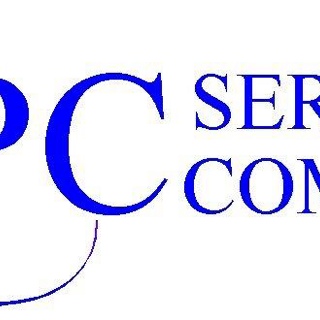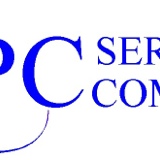Information
-
Document No.
-
Audit Title
-
Client / Site
-
Conducted on
-
Prepared by
-
Location
-
Personnel
Job Site Information
-
OSHA 300 Forms Complete and Posted Onsite?
-
Emergency Phone Number Posted?
-
Map to Closest Occupational Clinic (Including Hours of Operation and Telephone Number) Posted Onsite?
-
Map to Closest Hospital Posted Onsite?
-
EPC Services Company's Health, Safety, and Environmental Program Onsite?
-
Subcontractor's Health, Safety, and Environmental Program Onsite?
-
Site Specific Safety Plan
-
First Aid Kits On the Job Site?
-
First Aid Kit Adequate for the Number of Workers on the Site?
-
First Aid Kit Restocked As Necessary?
-
Work Areas Properly Signed and Barricaded?
-
Red = Danger
-
Yellow = Caution
Site Access / Safety and Health Training Information
-
Onsite Workers Completed Safety Orientation?
-
Onsite Workers Completed the EPCS Project Specific Safety Plan
-
Visitors to the Job Site Report to the Main Office and Sign Visitor's Log?
-
Visitors to the Job Site Escorted by a Supervisor and Task Hazard Analysis (THA) Briefing of Hazards Before Entering Job Site?
Task Hazard Analysis (THA) and Daily Safety Meeting
-
Task Hazard Analysis Complete?
-
Did the subcontractor break the job tasks into steps?
-
Hazards for the Job Site Covered?
-
Did the subcontractor list the consequences and how it could happen?
-
Tailboard Meeting Conducted Before Work Started and as the Scope of Work Changes?
-
Change in Scope of Work Occurred, Was a New THA Completed and a Tailboard Meeting Conducted?
-
Does the subcontractor have adequate control measures to eliminate or control potential risks/hazards?
-
EPCS Management Team, Subcontractors' Supervisors, Employees, Visitors, and Vendors Been Briefed on the THA and Sign THA After Tailgate Morning Briefing, Significant Break Briefing, Change in Scope of Work Briefing Stating Their Understanding?
-
Is the subcontractor specific? (i.e. Subcontractor should not use generalizations like "Be careful, be safe.")
Hazard Communication
-
Hazardous Material Management Program Onsite?
-
MSDS / SDS Onsite for All Hazardous Products?
-
Universal Spill Kits Onsite and In Each Vehicle In Case of a Spill?
-
Is Emergency Response Information Onsite and in a Common Area for All Job Site Workers?
Housekeeping
-
Work Area Neat?
-
Projecting Nails or Screws Bent Over or Removed?
-
Waste Containers Provided and Used?
-
Passageways and Walkways Clear?
-
If Not, Are Passageways and Walkways Properly Barricaded?
Fire Prevention
-
Adequate Fire Extinguishers?
-
Fire Extinguishers Checked Monthly and Annually?
-
Fire Extinguishers in Good Repair and Gauge "Green"?
-
Flammable Materials in Approved Containers and Properly Labeled?
-
Smoking Only In Designated Approved Areas?
Electrical
-
Extension Wires / Bare Wires or Missing Ground Prongs Taken Out of Service?
-
Ground Fault Circuit Interrupters (GFCI) Being Used?
Hand, Power, and Powder Actuated Tools
-
Hand Tools Inspected Before Use?
-
Guards in Place on Machines / Tools?
-
Correct Tool Being Used for Job At Hand?
-
Gloves and Proper PPE Worn?
Fall Protection
-
Safety Harness and Lanyard, etc. Inspected Before Use?
-
Safety Harness Worn Properly?
-
Employees Exposed to Fall Hazards Tied Off?
-
Employees Below Protected from Fall Objects?
Ladders
-
Non-Conductive Ladder Used When Used In An Energized Environment?
-
Ladders Extended at Least 36" Above Landing?
-
Ladders Secure to Prevent Slipping, Sliding, or Falling?
-
Damaged Ladders Taken Out of Service?
-
Stepladder Used in Fully Open Position?
-
No Stepping at Top Two Rungs of Stepladder?
Equipment Operation
-
All Equipment Inspected Daily Before Use?
-
Operators of Equipment Properly License, Qualified, Competent, and Authorized?
-
Is annual inspection current? (Boom/DOT)
-
Have Pre-Use Inspections Been Completed for All Equipment In Use at the Site?
-
Users Manual / Manufacturers Manual and Inspection Sheet in the Equipment?
-
Fire Extinguisher in Each Piece of Equipment and in Proper Working Order?
-
Equipment Leaking Any Fluids, etc.?
Trenching, Excavating, and Shoring
-
Operations Performed at the Proper Distance from Overhead Power Lines? (Refer to EPC Services Company Project Site Specific Safety Plan for Minimum Clearance Distances Located on Page 30).
-
Competent Person Identified and Present?
-
Excavations Shored or Sloped Back?
-
Materials Stored at Least 2 Feet Away from Trench?
-
Ladders provided every 25 Feet in Trench if Personnel In Trench?
-
Equipment at a Safe Distance from Edge of Trench or Excavation?
Material Handling
-
Materials Properly Stored or Stacked?
-
Employees Using Proper Lifting Techniques?
-
Tag Lines Used to Guide Loads?
-
Proper Number of Workers for Each Operation?
-
Gloves and Proper PPE Worn?
Welding and Burning
-
Gas Cylinders Stored Upright?
-
Gas Cylinders Properly Used and Stored?
-
Goggles and Shields Used?
-
Fire Extinguisher Readily Available?
-
Hoses in Good Condition?
-
Fire Watch when applicable?
Cranes
-
Outrigger Extended and Swing Radius Barricaded?
-
Employees Kept from Under Suspended Loads?
-
Operator Licensed for Crane Used?
-
Chains and Slings Inspected and Tagged as Required?
-
Rigger Qualified?
-
Hand Signal Charts on Crane?
-
Users Manual / Manufacturers Manual and Inspection Sheet in the Equipment?
-
Fire Extinguisher in Each Piece of Equipment and in Proper Working Order?
-
Crane Operator Log Up To Date?
Concrete Construction
-
Employees Protected from Cement Dust?
-
Exposed Skin Covered to Protect from Burns?
-
Rebar/Pipe and Other Impalement Hazards Capped / Protected?
Personal Protective Equipment (PPE)
-
Hard Hats Worn?
-
Safety Glasses with Side Shields Worn?
-
Hearing Protection Worn When Required?
-
High Visibility Safety Vest Worn?
-
Safety-Toed Work Boots Worn?







